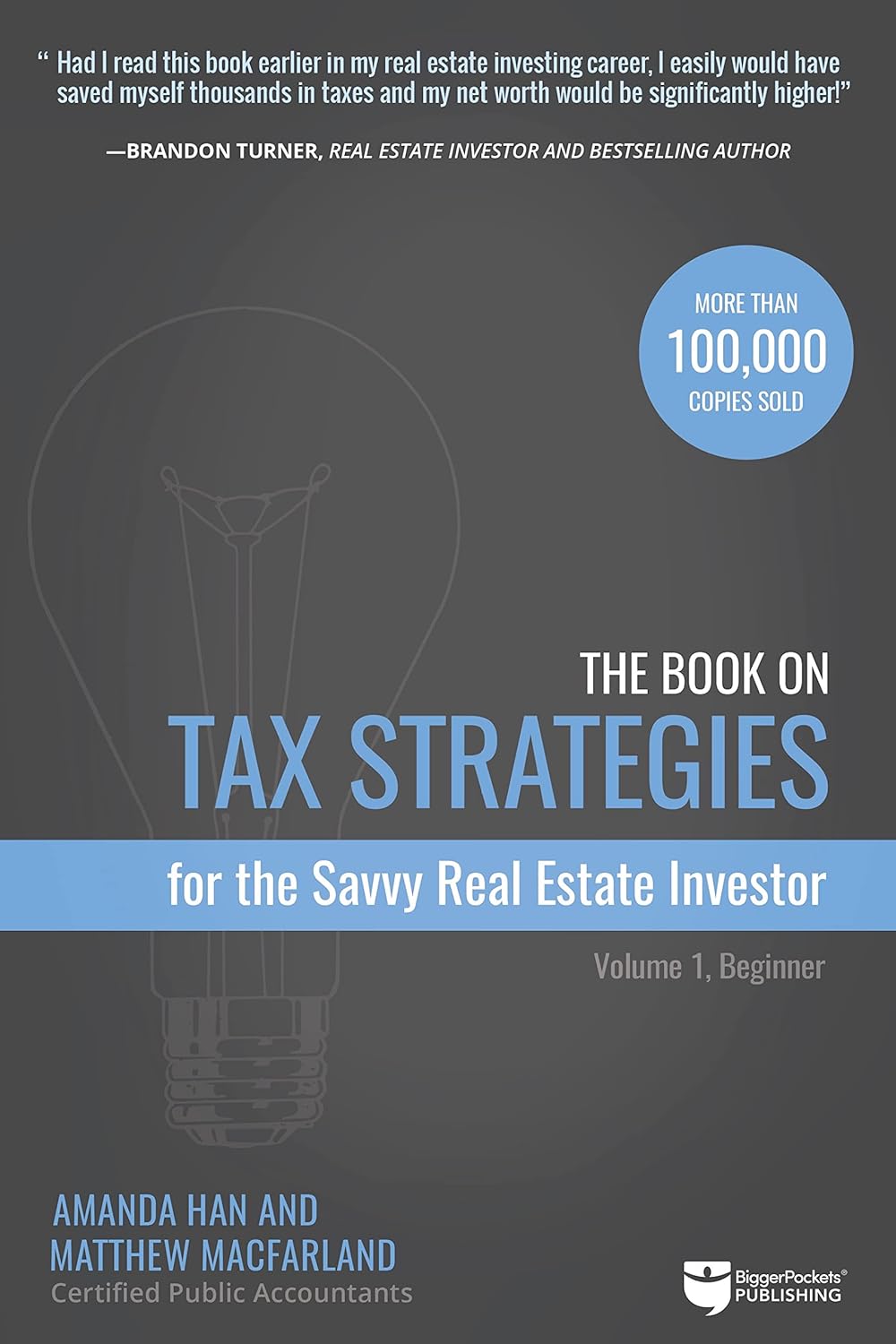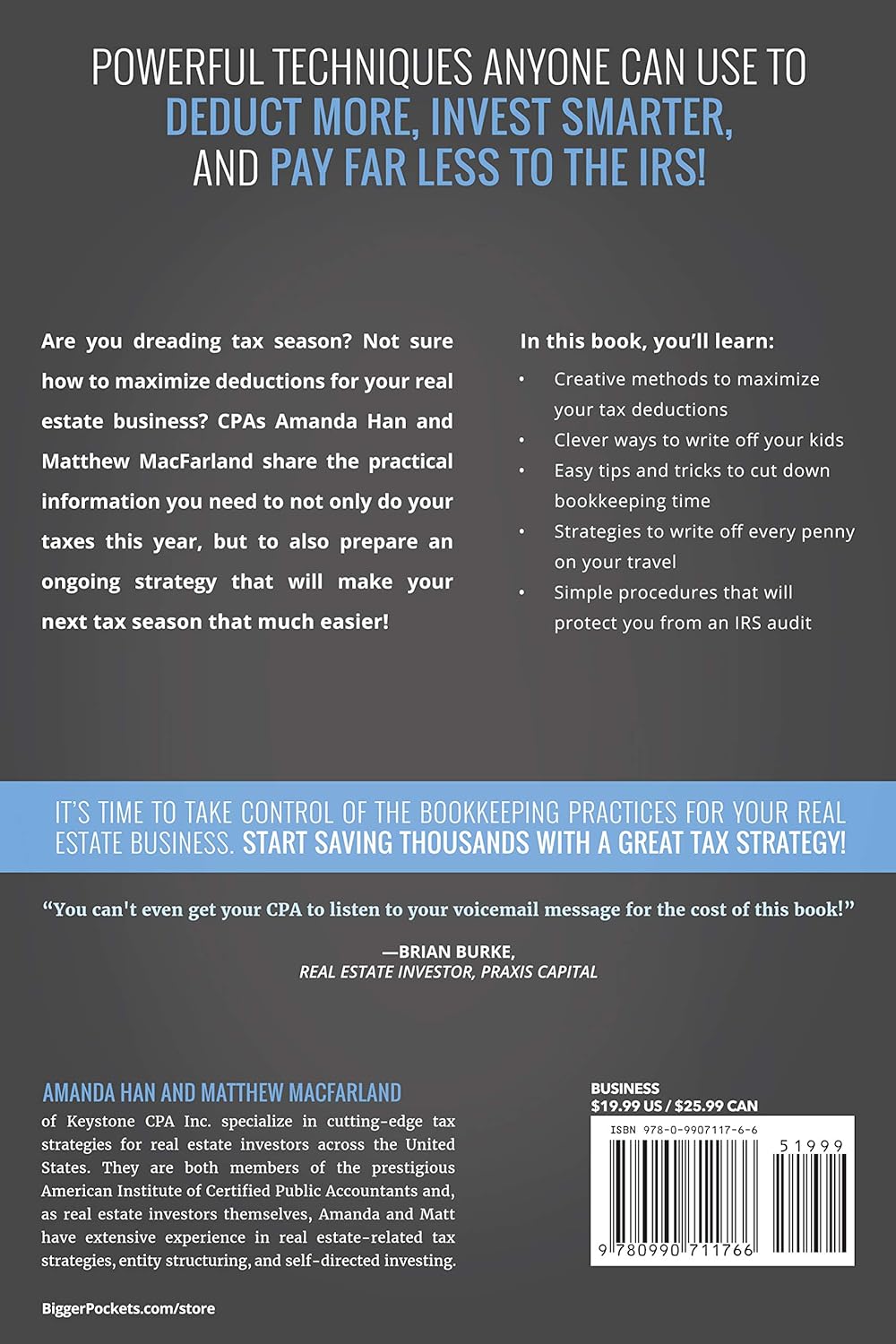I recently delved into "Tax Strategies for Real Estate Investors" by Amanda Han and Matthew MacFarland, a book that has been lauded for its practical approaches to mastering the tax implications of real estate investing. As someone interested in real estate, I was particularly curious about how I could optimize my financial strategies, given that even the most rewarding investments can be burdened by taxes. Intrigued by the promise of learning powerful techniques to minimize tax liabilities, I decided to give it a read.
From the get-go, I found the writing approachable and digestible. Han and MacFarland draw on their extensive CPA backgrounds to present the intricacies of tax codes in a user-friendly manner. A standout aspect was the emphasis on how the right tax strategies can potentially save thousands of dollars annually. This piqued my interest, especially considering that many small investors often feel overwhelmed when tax season rolls around.
Positives:
One of the most helpful sections of the book discusses how to maximize deductions creatively, including writing off expenses related to vacations and home offices. This is a revelation for many, as it empowers us to see the opportunities for deductions in everyday life. I appreciated that the authors offered real-world scenarios and actionable advice throughout the book, making complex tax strategies feel accessible.
Another positive element was the section addressing LLCs. The authors delineate their pros and cons, making it easier for readers to determine if forming one is beneficial for their unique circumstances. For someone like me, who has often considered this option, it was enlightening to see a clear breakdown that equipped me to make a more informed decision.
Drawbacks:
However, not everything was perfect. A few readers noted that some sections felt repetitive, and I found this to be partially true. While I valued the repetition of key ideas for emphasis, at times, it felt like the book could have made its points more succinctly. A tighter focus would have enhanced readability and kept me more engaged.
Moreover, information about retirement accounts was good but felt somewhat generalized. While it briefed the strategies, I would have appreciated deeper insights or examples, particularly for someone keen on funding investments through retirement accounts. As a novice investor, I sometimes felt the need for more context or exploration to fully grasp the potential implications.
The official description highlights how this guide aims to help investors take control of their bookkeeping practices and take the sting out of tax season. I can confirm that it succeeds in this mission to a considerable extent. The book offers smart, proactive techniques that demystify the often-daunting world of taxes for real estate investors.
In conclusion, "Tax Strategies for Real Estate Investors" is an invaluable resource for anyone navigating the complex landscape of real estate investment taxes. Despite a few minor drawbacks—especially concerning the occasional repetitiveness and breadth of retirement strategies—it’s an excellent starting point for investors looking to keep more of their hard-earned money. With practical advice and straightforward explanations, I firmly believe that this book can indeed set readers on a path towards smarter financial decision-making. I would recommend it to both novice and seasoned investors; after all, who wouldn’t want to maximize their savings during tax season?








